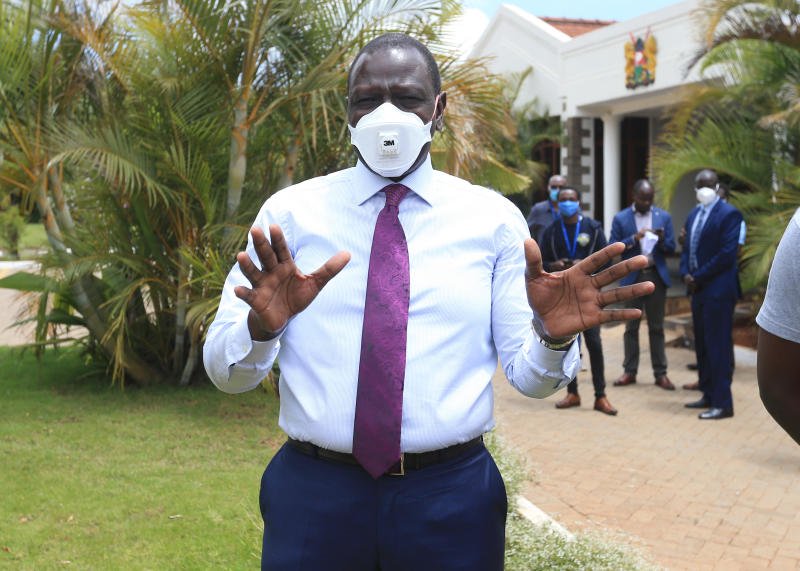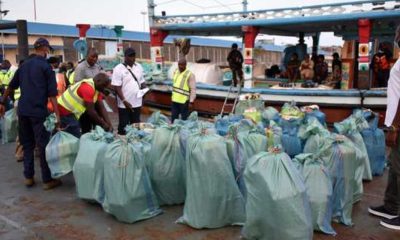Coronavirus
WHO Has Changed Its Advice On Face Masks

The World Health Organization Friday changed its advice on face masks amid the coronavirus pandemic, saying they should be worn in places where the virus is widespread and physical distancing is difficult.
The use of masks has been a hot topic ever since the pandemic first emerged in China in December.
“In light of evolving evidence, WHO advises that governments should encourage the general public to wear masks where there is widespread transmission and physical distancing is difficult,” said WHO chief Tedros Adhanom Ghebreyesus.
In areas with community-level virus transmission, “we advise that people aged 60 years or over, or those with underlying conditions, should wear a medical mask in situations where physical distancing is not possible”, he added.
But the UN health agency stressed that facemasks alone “will not protect you from COVID-19” — and people suffering with the virus should not be out in public if they can avoid it.
The WHO maintained its recommendation that people who are sick with COVID-19 symptoms should stay at home and if it is absolutely necessary for them or their contacts to leave home, they should wear a medical mask.
As before, those caring for an infected person at home should wear a medical mask when in the same room; and health workers should wear medical masks plus protective equipment when dealing with suspected or confirmed COVID-19 patients.
But in an update affecting healthcare workers, the WHO now recommends that in areas with widespread virus transmission, all people working in clinical sections of a health facility should wear medical masks — not just those dealing with patients with COVID-19.
– Three-layer facemask –
The WHO also issued new guidance on the composition of non-medical fabric masks for the general public, advising that they should consist of at least three layers of different material.
The inner layer should be made of a water-absorbent material such as cotton, the middle layer — which acts as a filter — from a material like non-woven polypropylene, while the outer layer should be a water-resistant material such as polyester.
The WHO’s emergencies director Michael Ryan stressed that putting on a fabric mask is primarily about preventing the wearer from possibly infecting others, rather than self-protection.
“It’s an altruistic act,” he said.
And Tedros stressed that masks were only one part of an effective strategy to suppress the virus — and should not lure people into a false sense of security.
He said they were not a replacement for physical distancing and hand hygiene.
“Find, isolate, test and care for every case, and to trace and quarantine every contact. That is what we know works. That is every country’s best defence against COVID-19.”
The novel coronavirus has infected at least 6.7 million people and killed more than 390,000 since the outbreak first emerged in China last December, according to a tally from official sources compiled by AFP.
Kenya Insights allows guest blogging, if you want to be published on Kenya’s most authoritative and accurate blog, have an expose, news TIPS, story angles, human interest stories, drop us an email on [email protected] or via Telegram
-

 Investigations2 weeks ago
Investigations2 weeks agoHow Land Grabbing Cartels Have Captured Ardhi House
-

 Business1 week ago
Business1 week agoPanic As Payless Africa Freezes With Billions of Customers Cash After Costly Jambopay Blunder
-

 News2 weeks ago
News2 weeks agoSCANDAL: Cocoa Luxury Resort Manager Returns to Post After Alleged Sh28 Million Bribe Clears Sexual Harassment and Racism Claims
-

 Africa2 weeks ago
Africa2 weeks agoPredators of South Sudan: Young “Guardians” Loot Billions
-

 Business2 weeks ago
Business2 weeks agoMwananchi Credit Faces Massive Lawsuits After Court Flags Predatory Lending That Left Customers’ Loans Ballooning
-

 Investigations7 days ago
Investigations7 days agoHow SportPesa Outfoxed Paul Ndung’u Of His Stakes With A Wrong Address Letter
-

 News1 week ago
News1 week agoRentokil Boss Fraser Branch in Highway Smash as DUI and Racism Claims Surface
-

 Investigations2 weeks ago
Investigations2 weeks agoHow Arrest of a Soldier’s Spouse Dragged KDF Into Alleged Theft of Meth Haul in Mombasa



















